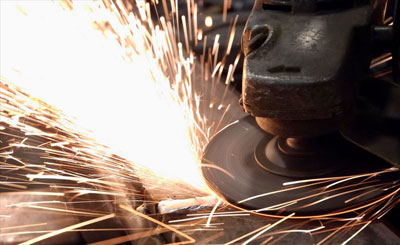

News, page 6, Issue 472, June 7
Translated by Tang Xiangyang
Original article: [Chinese]

"The iron ore trade is a straw being used to suck the profits out of the Chinese economy; HSBC, Citibank, and Morgan Stanley are using the straw to suck the profits out of China's steel companies and twelve other steel-related industries." Liu Yongchang, director of the Ministry of Industry and Information Technology’s steel department made this statement at a conference not long ago. These companies are the largest shareholders of global mining giants Rio Tinto and BHP-Billiton.
Luo Bengsheng, deputy chairman of the China Iron and Steel Association (CISA), agrees but has been less vocal about the profit drain since the CISA has withdrawn from the international iron ore pricing negotiations, giving the three mining giants, BHP-Billiton, Rio Tinto and Vale, a more dominant say.
Now Vale is taking an even tougher position. Vale told the EO that it has reached permanent or temporary agreements with its clients worldwide, indicating that the price of iron ore, which already increased 90 percent from the first to the second quarter, is likely to increase by another 30-35 percent on current prices in the third quarter of this year.
Given these circumstances, divisions have arisen between Chinese steel companies. Some supporters of the “quarterly pricing system” have backtracked; some have reduced their steel prices to gain a bigger market share; some have switched from steel production to trading in iron ore.
With the price of steel having fallen at the end of the second quarter while that of iron ore has risen, the old, long-term pricing system has been replaced by a new system that is causing turbulence.
The old, contract pricing system was replaced by an index pricing system which was developed by Vale and is shared with Rio Tinto and BHP. Under this system, the month before the start of a new quarter, prices are formulated using the average prices of the previous three months. The big three mining companies adopted this system after the long-term pricing system was broken up.
The new quarterly pricing system, according to Liu Yongchang, will allow mining giants to set the price of iron ore according to the profit margin of Chinese steel enterprises thereby allowing Chinese steel producers to earn just enough profit to survive and never fold.
Vale exported 56.8 percent of its iron ore, approximately 140 million tons, to China in 2009, gaining a net profit of 5.394 billion US Dollars. The total profits of the three mining giants exceeded 12 billion US Dollars in 2009, double the whole of the Chinese steel industry.
Reduce Output or Prices?
With iron ore prices surging, Chinese steel companies have been forced to act. Hebei Steel reduced the booking prices of its steel products in June by 200-300 yuan per ton and also reduced its settlement price in May by 250-350 yuan per ton. Additionally, Bao Steel announced that it would greatly reduce the price of its products in July.
Ding Liguo, board chairman of Hebei Delong Steel Group, says that output should be reduced to maintain demand rather than lowering prices as the latter will trigger a pricing war and impact the entire Chinese steel industry.
Some steel producers agree and have begun to reduce their output. Most companies, however, are following the lead of Hebei Iron and Steel Group and Baosteel, who were number 2 and 3 in crude steel output worldwide in 2009, by lowering their prices.
An anonymous vice general manager with a large, state owned steel company located in Liaoning province thinks differently from Liguo. According to him, it is important for all steel companies to compete with each other to survive. Only those steel companies that make timely reductions to their prices will survive because that is the only way they can get cash flow to buy iron ore and coking coal, which account for 90 percent of the cost of steel production.
He added that the situation for private steel producers is different from state-owned steel producers as state owned producers are responsible for hundreds of thousands of employees, driving investment into the local economy, ensuring GDP growth and tax revenue for local governments and are not permitted to reduce production even if they desire to do so.
Life After the Long-term Pricing System
While Ding Liguo initially believed that the new quarterly pricing system would be better and more flexible, he now believes it is worse than the previous system.
Liguo is unable to predict where iron ore prices will go from here but he is certain that they will continue to rise. The next fear for those in the industry is the price of coking coal which is steadily rising. With most of China’s coking coal coming from Australia, Liu Yongchang believes that it will become another drain on the Chinese economy.
The quarterly pricing system has even altered the career path of some steel bosses. Zhang Zelin used to be the general manager of Tangshan Hongzhong Steel Company, a steel producer with a yearly sales revenue exceeding four billion yuan. But not long ago, Zhang left the company and now works for a business in Tianjin trading iron ore. Compared with running a steel company, his new job is more relaxed and pays more.
The shifting of pricing systems has made many people in the steel industry realize that if you want to make money in this sector, you should join the iron ore industry.
This article was edited by Andrew Ward and Rose Scobie

